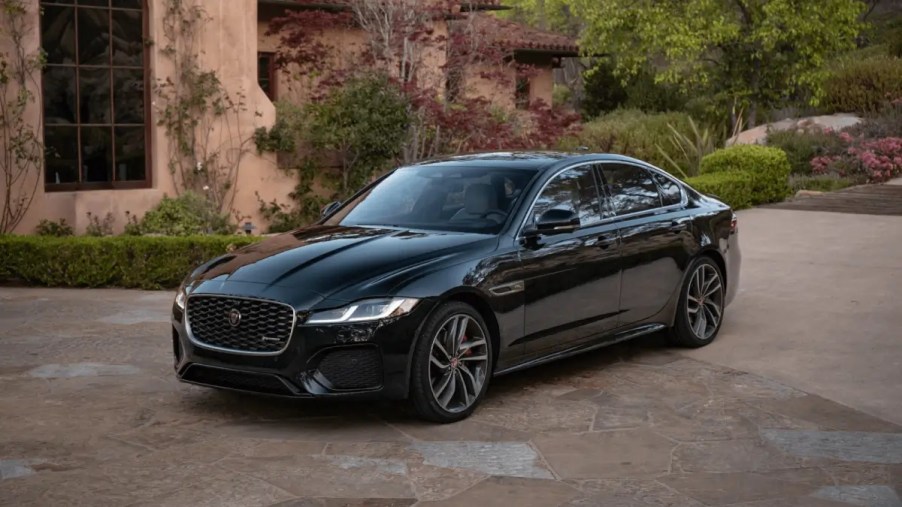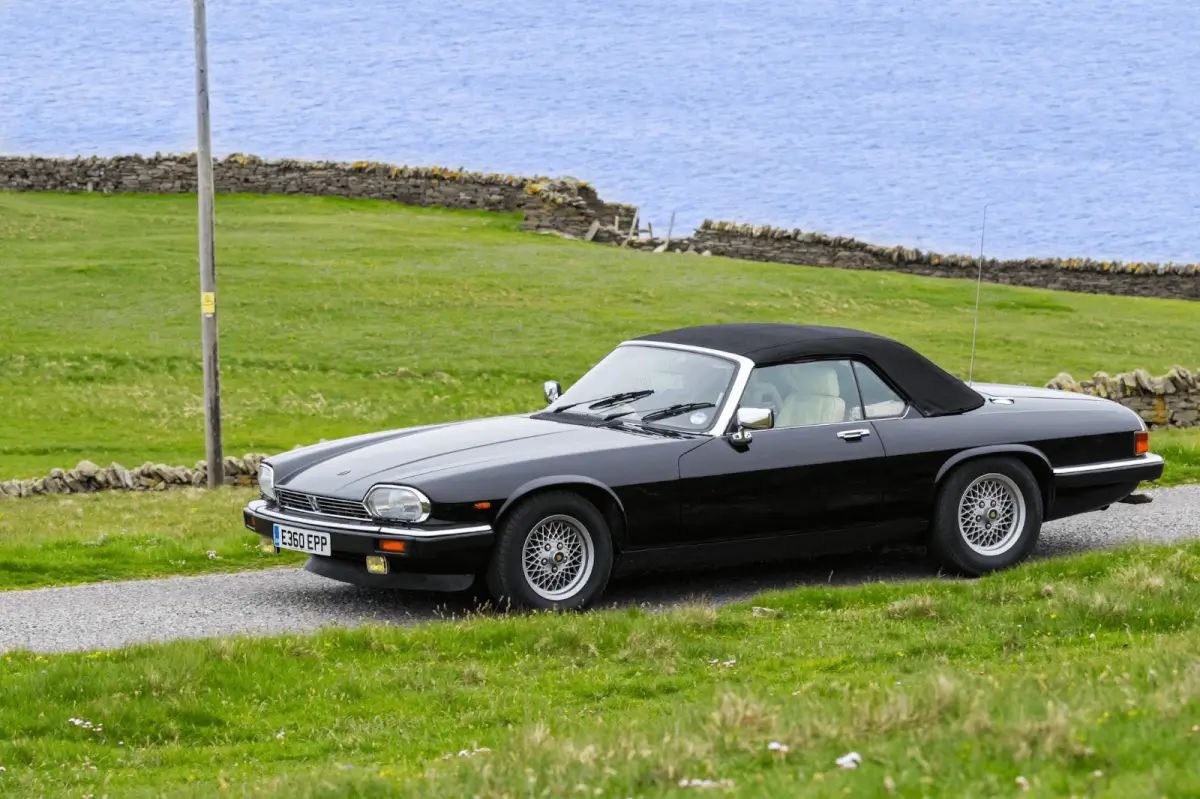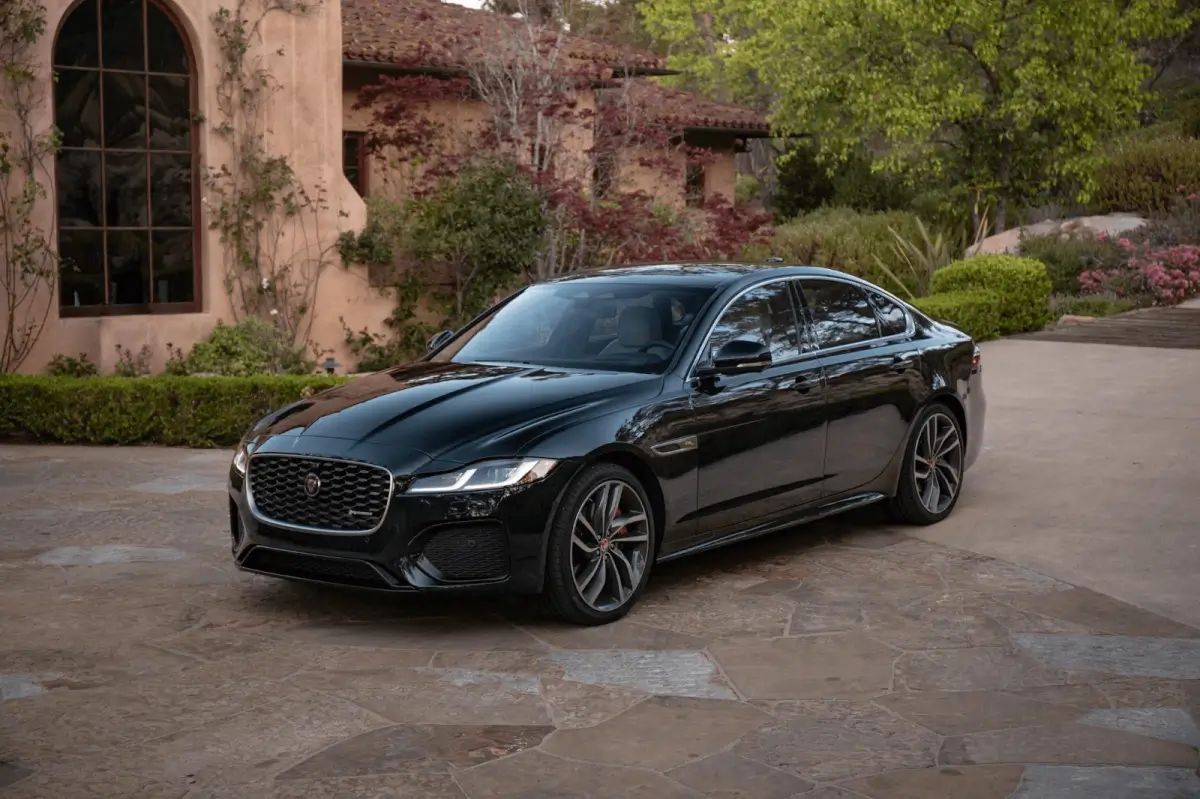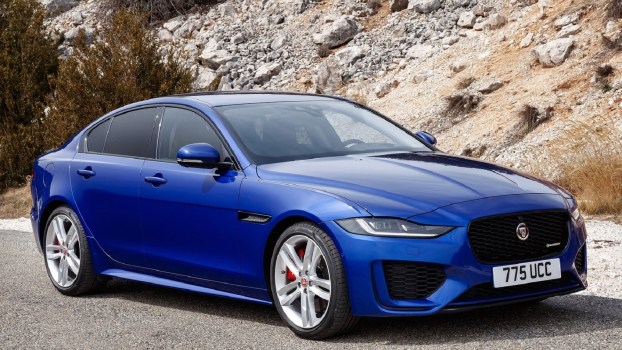
Is the Jaguar Brand Dead? Why This Luxury Car Brand Struggles to Remain Relevant
It doesn’t take a long look back to see when Jaguar was a legitimate luxury car contender. But since 2012, the British luxury brand has been flagging. Despite a partnership with the wildly successful Land Rover brand, Jaguar has steadily fallen behind for over a decade. But can Jaguar come back from the dead? It can, but it doesn’t look like it wants to.
Jaguar’s performance car history

In America, we tend to think of Jaguar as a luxury car brand. However, this British marque’s roots come from generations of motorsports excellence. As one of the winningest brands in endurance racing history, Jaguar’s reputation was rock solid in the 60s and 70s. By 1968, the Jaguar XJ6 took the technology from a decade of endurance racing excellence and applied it to a four-door family car.
The result is one of the first legitimate sport sedans that feel familiar to us today. A twin-cam straight-six engine, anti-dive suspension geometry, and wide-track independent suspension gave the original XJ6 legitimate performance-car chops.
Meanwhile, the cabin was, in fact, a thing of luxury. Warm leather and wood tones graced the interior surfaces, creating a legitimately comfortable space. It’s the kind of thing we take for granted today, but that attitude is also part of why Jaguar is dead on the vine.
Of course, who could forget the Jaguar E-Type? Perhaps one of the most iconic sports cars of all time, the sleek, open-top roadster has a legend all it’s own.
Jaguar initially kept up in an era of change
As the world sped up, so did the cars. At the outset, Jaguar had no trouble keeping pace. First came the XJ12, which bolted a 5.3-liter V12 powerhouse to the frame of the XJ6. At the time, it was the only production 12-cylinder vehicle in the world, topping out at over 140 mph. We wouldn’t see such a thing in any other production four-door until the BMW 7 Series added the arrangement in 1986.
At this point, Jaguar continued to dominate in the world of racing as well. The Jaguar XJR-12 is an endurance racing legend in keeping with the brand’s origins. A 7.0-liter V12 screamed down the Mulsanne straight at speeds of up to 229 mph en route to victory at the 1990 24 Hours of Le Mans.
At this point though, brands like BMW, Audi, and Mercedes-Benz were catching on. In addition to matching the Jaguars for luxury, those brands were also churning out high-performance sport sedans. This was, after all, the era of the Audi Quattro, BMWs M3 and M5, and Mercedes 190E.
Still, the British brand was keeping pace with legends like the XJS V12 and the more stately XJ sedan. Now, a dead lineup has Jaguar on the back foot.
Entering a new millennium
As the calendar turned from nines to zeros and we were all panicking about the world economy collapsing, Jaguar was still churning out enticing sports cars. The XK8 felt like a modern version of the E-Type, albeit less visceral than its 1960s ancestor. By 2003, a new XJ came along with retro exterior styling and a devastatingly beautiful interior.
Even the engineering remained solid despite the growing size and opulence of Jaguar’s four-door cars. They handled well, but the Jaguar mantra of “Space, grace, and pace” was starting to drop the latter concept.
That said, the brand still developed enticing engine options like the 3.5-liter V8 alongside the existing 4.2-liter eight-cylinder and the more sedate V6 options.
The S-Type turned out to be another feather in Jaguar’s cap. This four-door offered a modernized version of the brands four-headlight design language and up to 390 horsepower from the aforementioned 4.2-liter V8.
Decline of an empire
By the time the 2010s rolled around, the shine of Jaguar’s apple had begun to dull. The 2012 XJ was a bright spot, but many of the brand’s cars were middling, at best. The one thing Jaguar had done well was blend premium luxury with engineering excellence. While Jaguar’s standards hadn’t fallen, other brands had simply caught up.
To stand out, the British brand needed to make a leap forward, but it didn’t. Rather than attempting to make its sport sedans better, Jaguar decided to lean into the luxury SUV space. But there was a problem.
Both Jaguar and Land Rover were subsidiaries of Ford by 2002, and to that point had been working in completely different arenas. So when Jaguar decided to dip a toe into Land Rover’s pond with the new F-PACE SUV in 2015, it felt like a sign of desperation.
Jaguar isn’t dead because of Carmageddon
There are plenty of things to blame on the global focus on SUVs. Higher emissions, the death of the Ford Focus RS, and a narrowing window of affordable four-door cars are all attributable to the same carmageddon phenomenon. But Jaguar’s downfall is entirely their own.
When an upstart luxury brand like Genesis can eat into luxury market shares as brands like BMW and Mercedes-Benz slip, it’s proof positive that Jaguar didn’t have to go down this path.
In fact, the latest BMW 3 Series, Audi RS 3, and Genesis G70 all prove that luxury sport sedans can still work. The problem wasn’t, then, that luxury cars were dead. It was that they had to be compelling – and Jaguar was not.
The last XE had a pretty interior in pictures, but the materials and finish lagged far behind less pricey competition. Given the option between an XJ and the Toyota Avalon, the Japanese four-door is an easy choice. And even if luxury as a status symbol matters, a BMW 5 Series offers a whole lot more.
Even the vaunted Jaguar XF has fallen behind, offering scant updates while the competition is adding screens, voice-activated tech, LED dash panels, and a host of other gadgets to capture the ADHD-addled brains of a tech-addicted public. And that’s no shame on anyone – when given a choice to adapt or die, most of us chose to adapt. Jaguar didn’t.

Now, with the death of its most interesting product, the Jaguar F-Type, we’re left with a brand that is a shell of its former self.
Just a pair of four-cylinder turbocharged compact crossovers, an admittedly excellent EV, and a lackluster full-size luxury sedan remain in the Jaguar lineup. On paper, none of these vehicles are awful. But they don’t stand out against their competition either.
And that’s not what a Jaguar is. The concept of a Jag had always been understated elegance with more power than you expect. A living room on wheels with enough road-holding capability to make muscle car owners weep. You can’t say that anymore.
Jaguar isn’t yet dead, but there is a new chapter
Here in this, the year of our lord two-thousand twenty-three, Jaguar has decided to shake out the cobwebs and start fresh. The British brand introduced an all-electric grand-touring luxury sedan for 2025 with an opulent, six-figure price tag.
Its stated goal is to move into the upper end of the market, surrounding itself with brands like Bentley and Aston Martin. Considering it can’t even keep pace with Toyota or Volkswagen right now, that seems like a tall task.
Still, with ties to the ultra-luxurious Land Rover brand, there is a chance that Jaguar can pull this off and save itself from ultimate extinction. We’ll just have to wait a few more years to find out.




